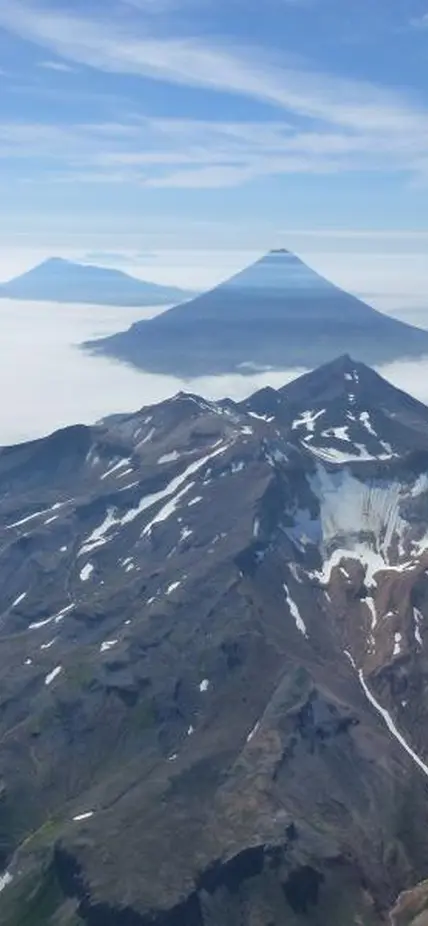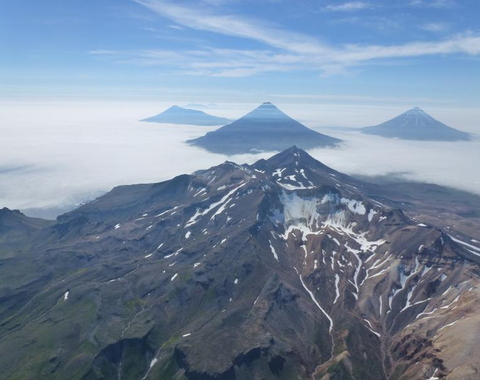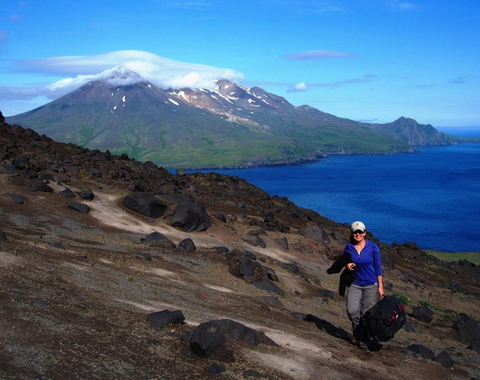All signs point to "supervolcano!"
In 2020, Carnegie Science volcanologist Diana Roman and her colleagues revealed that the Islands of Four Mountains in Alaska may be the location of a giant 166,000-year-old volcano. During a recent Neighborhood Lecture at Carnegie’s Broad Branch Road campus in Washington, D.C., Roman laid out the evidence to an eager crowd of more than 300 attendees.
"I played a bit of a trick to get you here," stated Roman to a chuckling audience. "You may have noted we put 'supervolcano' in quotes. Volcanologists hate that term."
"From here on out, we'll use the word caldera."
The Call of Cleveland
On the remote, eastern end of the Aleutian Arc in the northern Pacific Ocean are the Islands of Four Mountains. This chain comprises six tightly grouped volcanoes: Carlisle, Cleveland, Herbert, Kagamil, Tana, and Uliaga. Roman and her team—a powerhouse crew of several current and former Carnegie experts including Staff Scientists Lara Wagner and Hélène Le Mével, as well as then-postdocs Daniel Portner and Helen Janiszewski— were there to study Mount Cleveland.
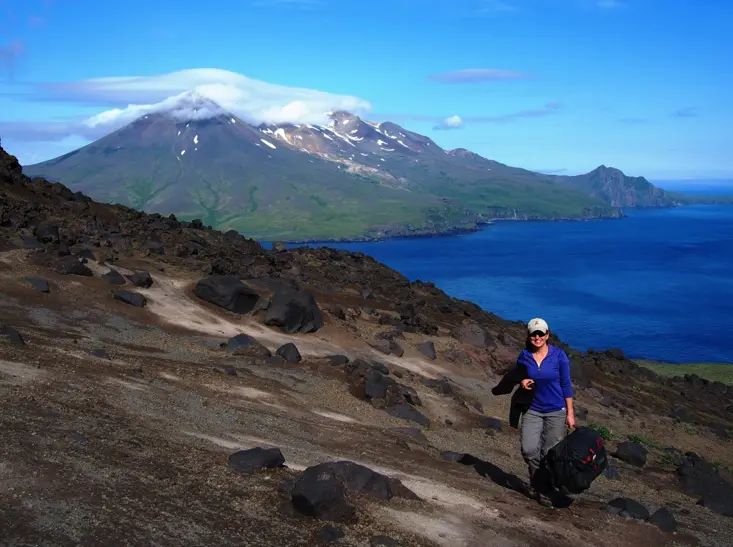
"We did not go to the Island of Four Mountains thinking there was a massive caldera system there," explained Roman.
Unlike its neighboring volcanoes, Mount Cleveland exhibited frequent and low-level volcanic activity. Roman and her team's growing suspicion that something more substantial lies beneath the islands led them on a quest to uncover the truth.
Caldera Clues
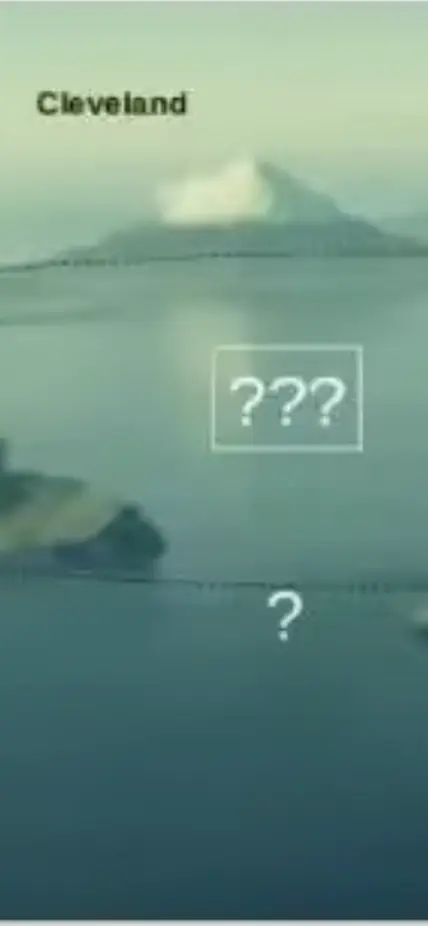
Roman presented the initial clue to the audience in the form of a ring of islands, a typical feature associated with calderas. A caldera forms when a massive volcanic eruption empties a magma reservoir in the Earth's crust, causing the land to collapse into an immense depression. The catastrophic nature of these eruptions, often felt worldwide, has historically caused significant societal disruptions.
"People have looked at rings of volcanoes and suggested they were calderas before when they were not," cautioned Roman. "We could be wrong."
To test for the presence of an underwater caldera, Roman's team first relied on data from seafloor maps and satellites and collaborated with geo-archaeologists, who had samples of welded ash sheets from Tana—one of the oldest islands in the chain.
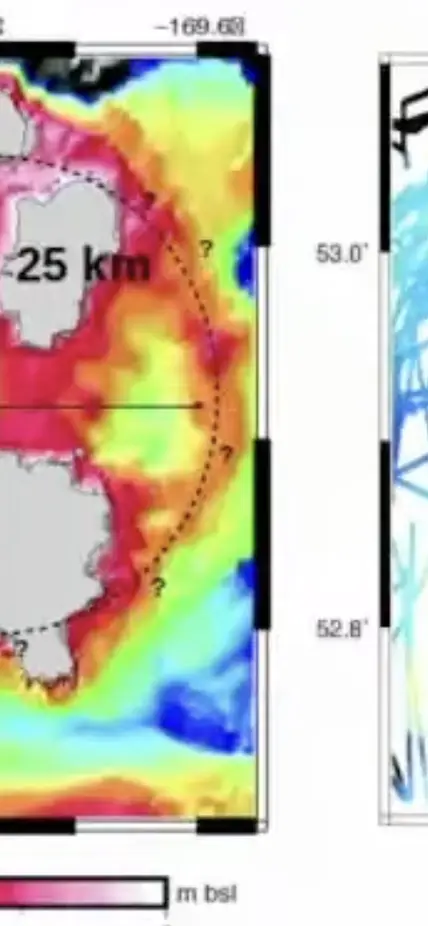
"Welded ash sheets can only occur close to the source of an active vent," Roman explained. "As the ash gets farther away, it can't do this sort of welding together. So, we think this deposit was sourced somewhere close to Tana."
Dating revealed that these samples were 166,000-years old.
Looking for Action Underground
Now that the team had stronger evidence of the caldera, they needed to see if it was still active.
However, this was all happening in 2020, when fieldwork was restricted due to the COVID-19 pandemic. This forced the researchers to use innovative techniques to explore the potential caldera. Carnegie geodesist Helene le Mevel employed satellite gravity measurements to detect density anomalies beneath the seafloor, suggesting the presence of low-density molten rock lurking beneath the surface, a possible indicator of an active caldera.
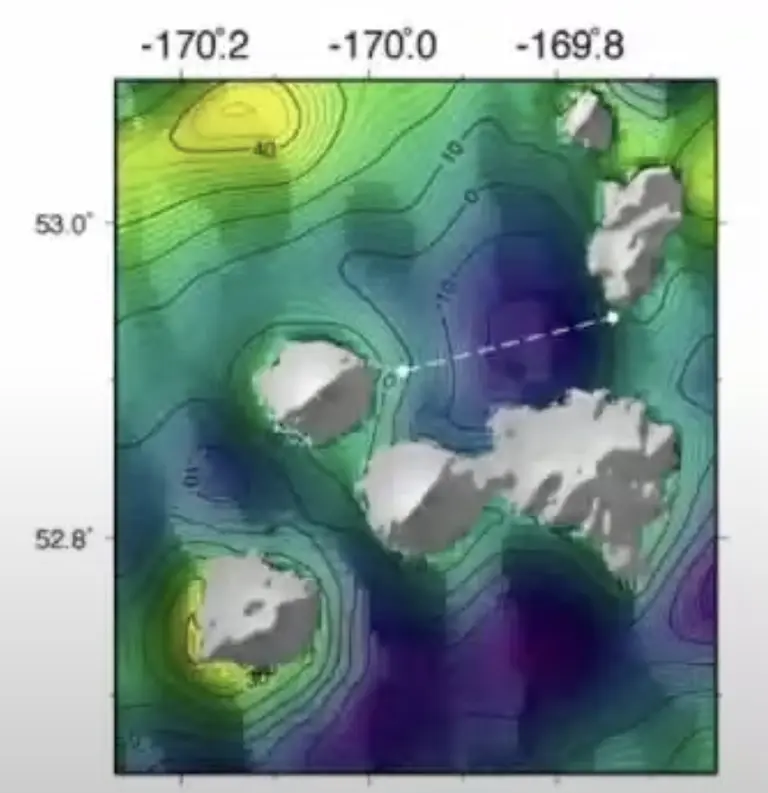
Back in the Saddle
In 2022, Roman and her team finally set out on an expedition to the region, traveling alongside another research team. Despite facing a hurricane, they managed to install nine seismometers across the chain. This equipment will allow scientists to probe the hidden caldera's internal structure and activity.
The data they gather will allow the researchers to "see" the inside of the caldera like CAT scans let doctors see inside people's bodies. The researchers hope that results from this work will provide strong evidence that this island ring is hiding an active caldera beneath the water.
They will go back to collect their data in 2024.
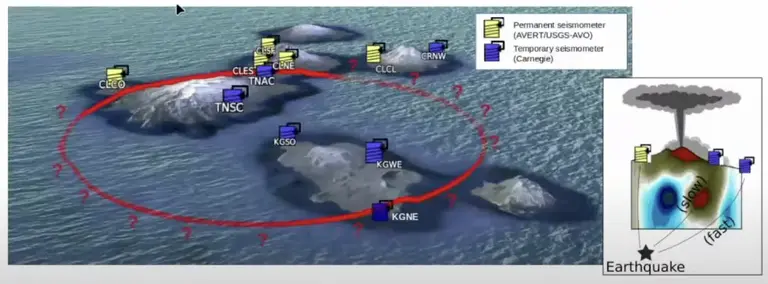
Old Crow Geochemistry Show
In a surprising development, the team discovered a massive lava flow on one of the islands, strongly suggesting a source vent for the Old Crow Tephra—an extensive ash deposit in the Yukon and Alaska with an unknown origin. Geochemical analysis of the lava flow closely matched the Old Crow, providing evidence for the lava flow's connection to the caldera.
While they await an age date for confirmation, Roman remains cautiously optimistic about this revelation.
"This is a big, big lava flow. These are only found in association with big calderas," Roman told the crowd. "We think this might be the source vent.”
Cataclysm on the Horizon? Probably Not.
Although low-level volcanic activity continues in the Islands of Four Mountains, Roman reassured her audience that a massive eruption is unlikely to occur anytime soon. These calderas typically exhibit periodic low-level eruptions rather than catastrophic events.
"With these kinds of calderas, you can have a leak on the edge, and it's just going to keep rolling with low-level eruptions like we see at Cleveland," Roman said.
"Cleveland is going to keep Cleveland-ing."
Looking Forward
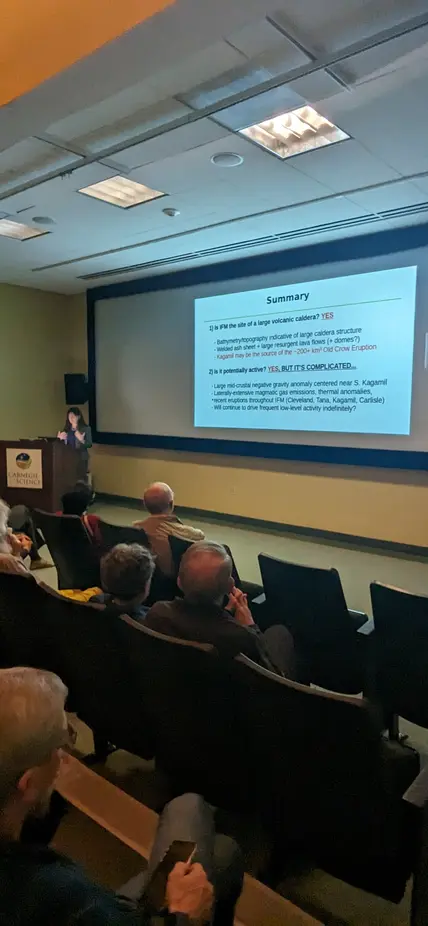
Roman concluded her lecture by emphasizing the importance of investing in volcano research to the audience.
"I want to end with a promise that our understanding of these beautiful and terrifying systems, these volcanic systems that both enable and threaten the habitability of our planet, is on the cusp of a revolution."
More Information
Diana Roman's research straddles the boundary between volcanology and seismology, with a dual focus on understanding the nature of magma ascent and eruption and of volcanic microearthquake swarms. Specifically, Roman works to understand, from a mechanical perspective, the formation, evolution, and dynamics of crustal magmatic systems and the source mechanisms and causes of microearthquake swarms occurring in the vicinity of active volcanoes. These two lines of research are tied together through the development of conceptual and numerical models of the interaction of tectonic and volcanic processes.
Read Full BioRoman shared two cross-disciplinary initiatives she's working on to better predict volcanic hazards and coordinate risk mitigation.
Subduction Zone in 4 Dimensions: A community-driven initiative for a long-term, interdisciplinary research program to define the limits and possibilities of predicting geohazards.
VolcanoAid: An organization dedicated to mitigating the risk from globally impactful eruptions through international monitoring, preparedness, and advocacy for early warning and response to volcanoes.
